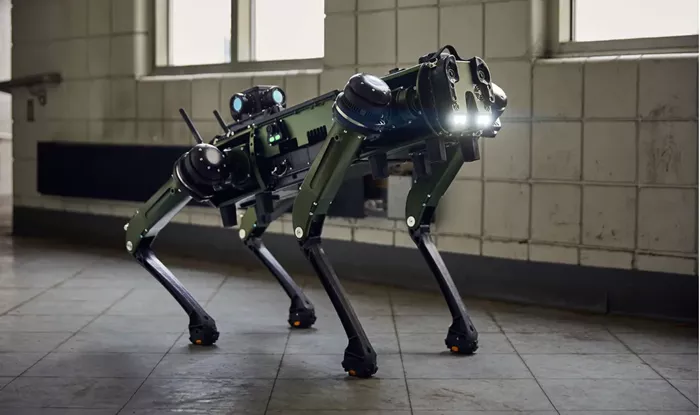In Genoa, a groundbreaking robotic system is transforming beach cleanliness with innovative technology. The Italian Institute of Technology (IIT) has unveiled VERO (Vacuum-cleaner Equipped RObot), a quadrupedal robot designed to tackle the pervasive issue of cigarette butt littering on beaches.
Cigarette butts are a major environmental nuisance, ranking as the second most common form of litter globally. Out of approximately six trillion cigarettes consumed annually, over four trillion butts end up discarded on the ground, leaching over 700 harmful chemicals into the environment. Addressing this issue through behavioral change alone is impractical, prompting the development of VERO as a solution.
The VERO robot, engineered by Claudio Semini’s team at IIT, integrates a commercial vacuum with a unique mobility system. Unlike traditional litter collection methods that rely on wheeled systems, VERO’s foot-mounted vacuums are ideal for uneven surfaces like beaches and stairs, where wheeled devices would struggle.
VERO is based on Unitree’s AlienGo model, outfitted with a vacuum mounted on its back. Hoses extend from the vacuum down to each foot, where custom 3D-printed nozzles ensure efficient suction near the ground. The robot autonomously scans designated areas using onboard cameras and a neural network to identify and differentiate cigarette butts from other debris.
The robot’s cleaning process begins with an operator setting the cleaning area. VERO then calculates an exploration path and uses its sensors to detect cigarette butts amidst potential duplicates. It carefully plans its movements to place its vacuum-equipped feet next to each butt while maintaining stability on varied surfaces like sand and stairs. An additional Intel RealSense depth camera assists in fine-tuning the collection process.
Initial tests demonstrate VERO’s capability to collect nearly 90 percent of cigarette butts, showcasing its efficiency and persistence. Unlike humans, VERO remains unperturbed by the task’s monotony, making it a reliable tool for continuous operation.
VERO’s design represents a novel application of legged robots, utilizing their legs for both mobility and operational tasks—a significant advancement from existing robots that switch their legs between locomotion and manipulation functions.
Beyond beach cleanup, VERO’s adaptable design opens up diverse possibilities. Future applications could include tasks such as spraying crops, inspecting infrastructure, and performing construction duties. Its versatility allows for the integration of various tools on each foot, making it a multi-functional asset for numerous applications.
In summary, VERO exemplifies the potential of robotics to address environmental challenges and expand the boundaries of automated tasks, paving the way for future innovations in robotic versatility and functionality.

